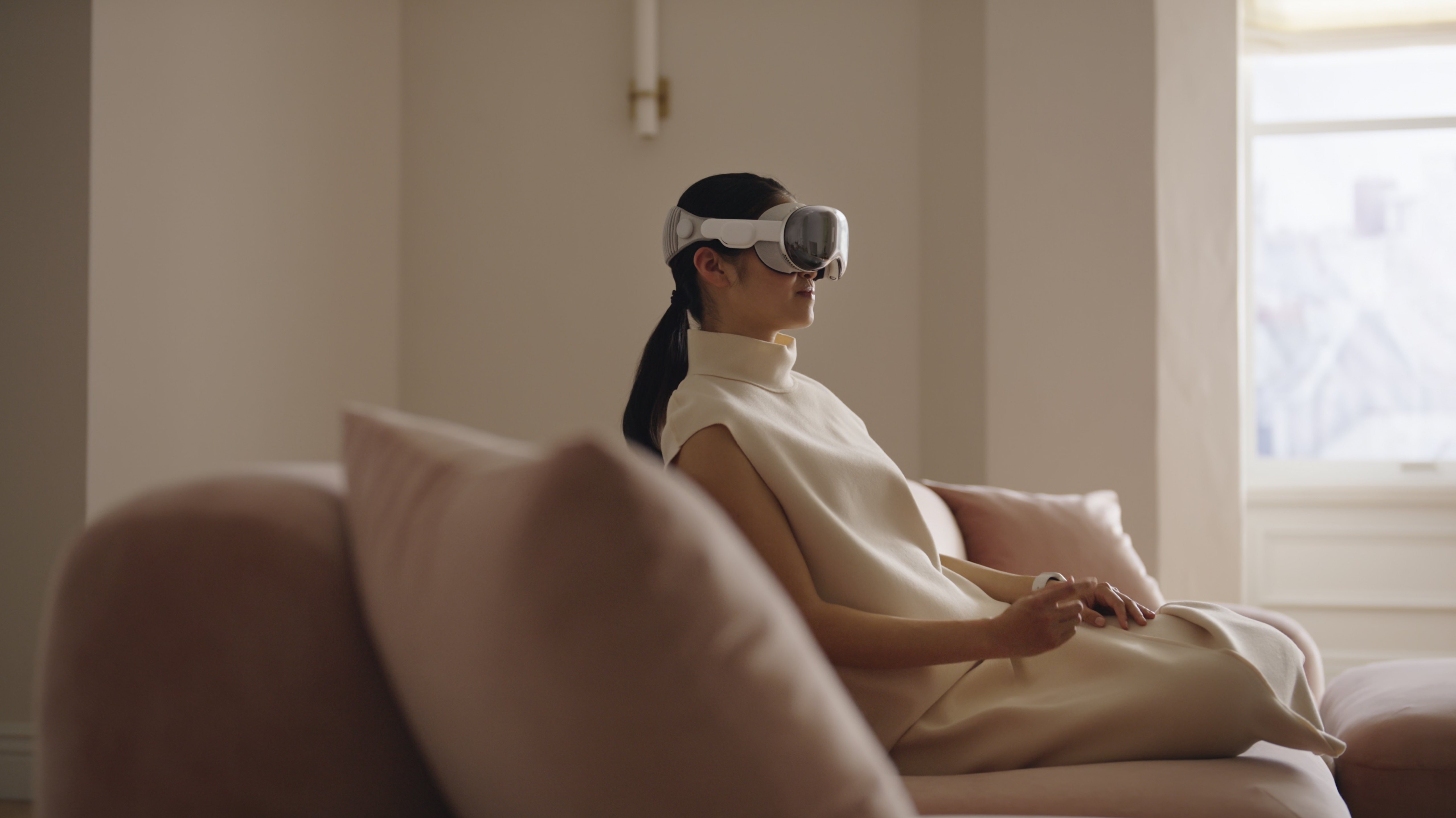Vision Pro hands-on reports suggest you'll need to hit the gym to get the best out of Apple's spatial computing future
It's time to work on those neck muscles.

Apple's Vision Pro is a spatial computing headset with a lot of attention right now, and rightly so. It marks Apple's first foray into a new market since the Apple Watch debuted in 2014, and that makes it a big deal for Apple and the mixed reality industry as a whole. But Apple has kept a tight rein on those who have spent time with it to date, leaving something of a vacuum of information. That started to change when some members of the press and YouTubers were able to get time with the headset recently, and there's a recurring theme throughout — you probably won't want to wear this thing for too long without taking a rest.
Any VR, AR, or mixed reality headset is going to struggle with one thing in particular and that's weight. Strapping anything to your head is always going to add weight that your neck has to support and whether or not that becomes uncomfortable — and after how long — depends on how well companies distribute that weight. So how well has Apple done it?
Reports continue to suggest that people who wear the Vision Pro headset start to feel that it gets too heavy after a while, although the timeframe does depend on the person in question. Apple seems to be aware of the issue, however, and it's already offering a new type of strap that helps to better distribute the weight while making the headset more sturdy in the process. Whether that will work for most people remains to be seen, but early reports are that there still might be an issue for some.
Strong necks for all
The good news is that Apple's new Dual Loop Band does seem to have helped alleviate some of the weight concerns. The Wall Street Journal's Joanna Stern took to X to say that she found that the weight of the Vision Pro headset on her face was particularly noticeable during her first two rounds of testing with it, something others have also said. However, a third sitting saw Apple use the Dual Loop Band and while Stern admits that it is "not as elegant" as the standard strap, it's "definitely more comfortable."
That was something backed up by Engadget's Cherlynn Low who found that they were left in pain after just 20 minutes spent with the Vision Pro and the standard strap. But after switching over to the Dual Loop Band Low reported that it "felt much better for weight distribution."
Not everyone had a problem with the standard strap, though. YouTuber Andru Edwards said that his "strong neck was fine after an hour" before adding that he "didn't wanna take it off." That might suggest that Apple's decision to include both straps in the Vision Pro box was the right one — allowing people to make their own minds up and perhaps use the standard strap during shortage usage periods.
One thing is certain though — those who don't have stronger necks might well do after a few months of wearing the Vision Pro headset.
iMore offers spot-on advice and guidance from our team of experts, with decades of Apple device experience to lean on. Learn more with iMore!
Vision Pro, coming soon
The Vision Pro headset will go up for preorder on Friday, January 19 before going on sale on February 2. This comes after months of waiting with Vision Pro first announced back on June 5 2023 during the WWDC 2023 opening keynote.
Whether or not the Vision Pro will prove to be the future of computing remains to be seen. But Apple is likely already working to make it lighter next time out, and the cheaper model is also thought to be in the works, too.
More from iMore

Oliver Haslam has written about Apple and the wider technology business for more than a decade with bylines on How-To Geek, PC Mag, iDownloadBlog, and many more. He has also been published in print for Macworld, including cover stories. At iMore, Oliver is involved in daily news coverage and, not being short of opinions, has been known to 'explain' those thoughts in more detail, too.
Having grown up using PCs and spending far too much money on graphics card and flashy RAM, Oliver switched to the Mac with a G5 iMac and hasn't looked back. Since then he's seen the growth of the smartphone world, backed by iPhone, and new product categories come and go. Current expertise includes iOS, macOS, streaming services, and pretty much anything that has a battery or plugs into a wall. Oliver also covers mobile gaming for iMore, with Apple Arcade a particular focus. He's been gaming since the Atari 2600 days and still struggles to comprehend the fact he can play console quality titles on his pocket computer.
